In February 2017 I was given a dream task, help Uganda Wildlife Authority (UWA) compile a checklist of birds in the Southern Sector of Bwindi Impenetrable Forest; I suppose you could call it a dream job although it wasn’t exactly a job, I was a volunteer. Call it what you like, it was an extraordinary experience, birding in an African rain forest.
(I want to avoid the kind of birding report that’s a barely disguised list, they can make for tedious reading. If you prefer you can go straight to my lists of Bwindi and area birds by clicking on this link. Otherwise, read on.)
First, to set the stage. Before there were people and settlements, a vast expanse of West and Central Africa was rainforest. Before there were maps and nation states, that forest would have been limited by topography and climate. Today only fragments of that forest remain, most of it in the Democratic Republic of Congo, some in northwest Rwanda and a bit in Uganda where it’s known as Bwindi Impenetrable Forest National Park. I say ‘a bit’, 330 square kilometers in the context of what it used to be is only a bit.
Bwindi as a national forest might not exist had the Ugandan government not seen its importance as a refuge for wildlife, families of Mountain Gorillas in particular, and the potential for tourism. The forest is ecologically extremely rich: plants, fungi, invertebrates and vertebrates; entering it you can barely comprehend its diversity.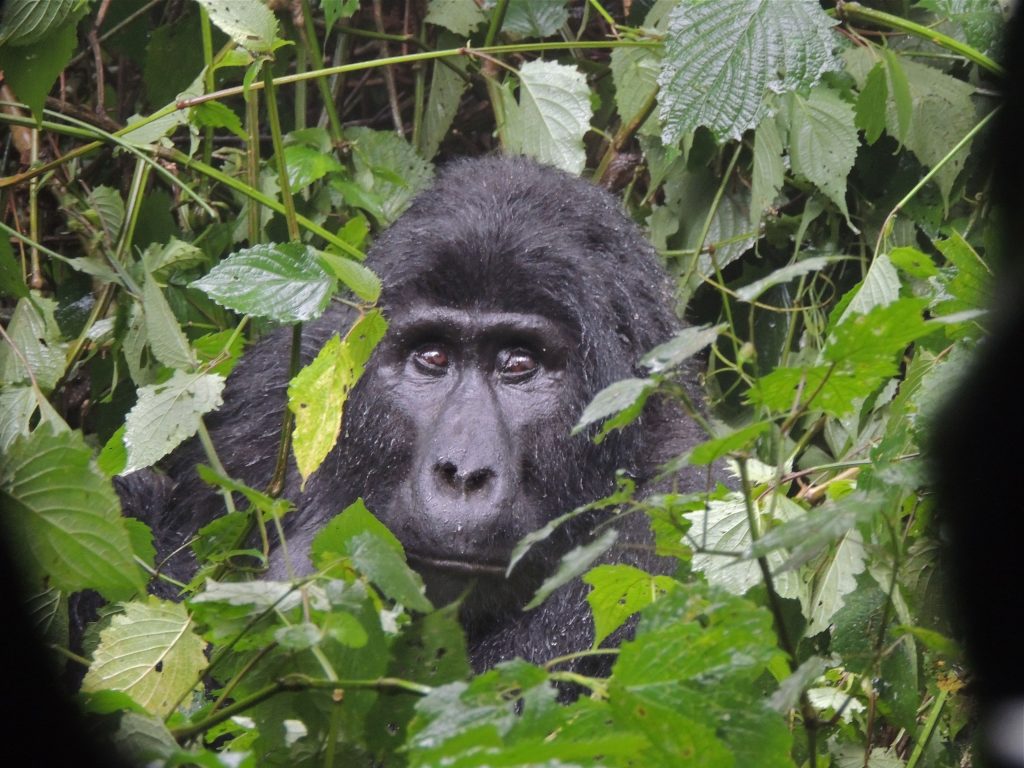
It is aptly named the Bwindi Impenetrable; you would not want to be lost in there. It’s okay for squirrels, Blue and Red–tailed Monkey and Black & White Colobus, they have their canopy highways, and the Mountain Gorillas, Bushpigs and Forest Elephants get around by brute force, but you, dropped down in its midst, even if you knew which direction to head would be hard pushed to move forward, backwards or sideways; the forest encases you.
Putting the forest and its impenetrability aside for a moment, this is a geologically dramatic corner of Africa shaped by the Albertine Rift, an offshoot of the Great Rift Valley. It is land being torn apart and consequently topographically complex. Although occupied and cultivated it is characterized by parallel ranges of folded hills, deep valleys, looming volcanoes and multi-fingered lakes formed when ancient volcanic outflows blocked rivers.
The entire Albertine Rift has about thirty-five endemic bird species; twenty four of them in Uganda; some aggressive tour companies like to stretch the count a bit. In two months I have satisfyingly seen twelve of them in or on the edge of Bwindi: my birding companions reliably report finding another five or six.
Administratively Bwindi is divided into two sectors. The Northern Sector has probably received more tourism and more attention paid to it, the Southern Sector is less well known. I have spent two months living in a village on Bwindi’s southern edge and it’s been one of my tasks to help compile a checklist of birds of the Southern Sector.
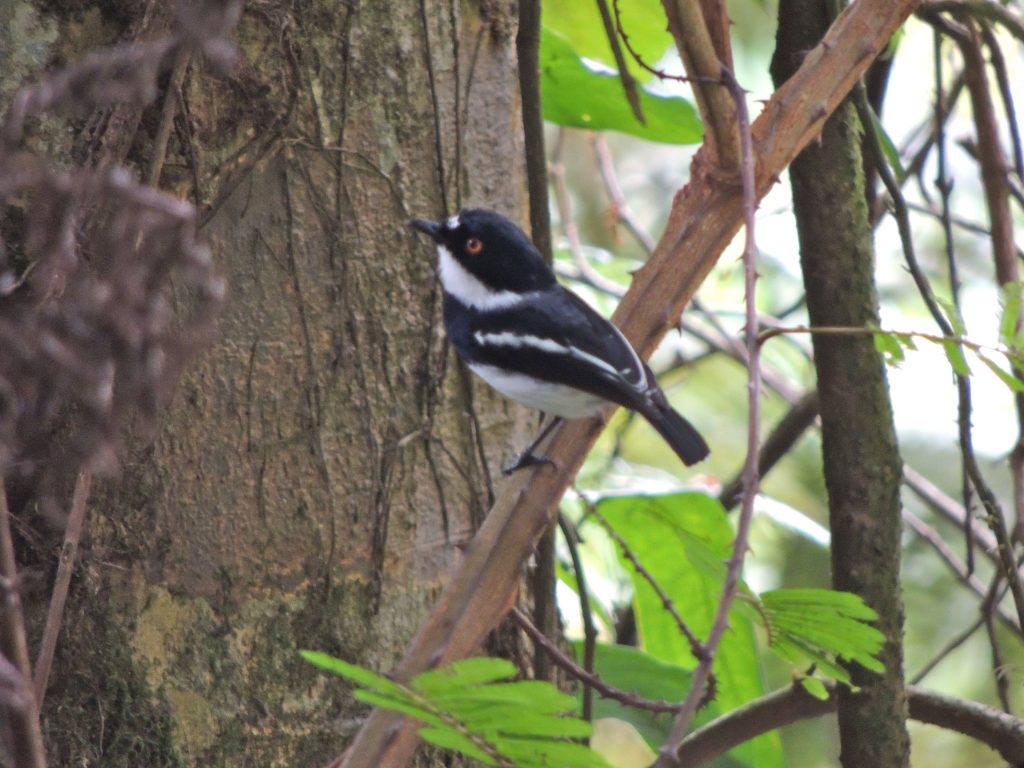
The trouble with birding inside Bwindi, is that forest birds, while sometimes easy to hear, are hard to see and even harder to photograph; it’s impenetrable remember. You either bird along the edge or follow the few available interior trails. Not every bird I celebrate in this account is exclusively a creature of impenetrable forest.
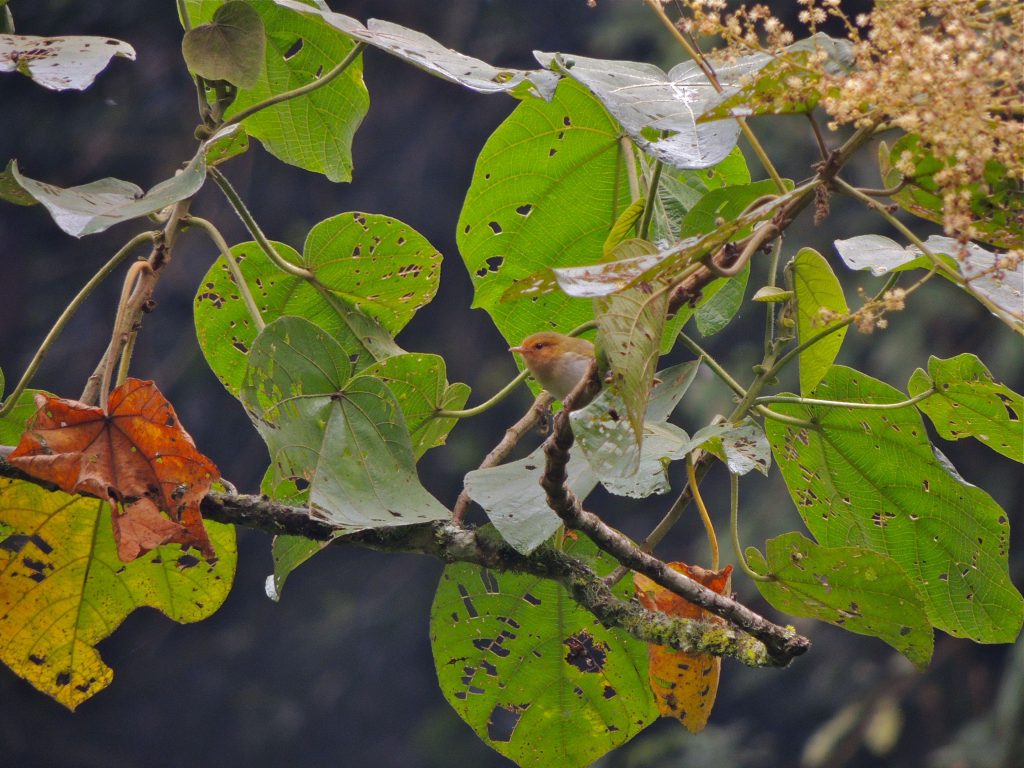
My Albertine Rift endemic species conquests were: Stripe-breasted Tit, found in a scenic hill-top pasture at the edge of Bwindi, it’s in the Paridae family which makes a relative of Europes’s Great and Blue Tits, and North America’s chickadees; Red-throated Alethe, glimpsed just once and fleetingly on the dense forest floor. Mountain Masked Apalis and Collared Apalis both distinctively loud songbirds of the thick forest; Red-faced Woodland Warbler, a supposedly common but much sought-after bird, I was lucky to see one and even luckier to get a photo; Yellow-eyed Black Flycatcher one of a family of three black flycatcher species, but this one we only ever saw inside Bwindi; Rwenzori Batis is a very distinctive small black and white forest bird, we knew of one place where they could be reliably found (and we did) and another popped up unexpectedly along a deep forest trail; Of the sunbirds: Blue-headed, Purple-breasted and Regal only the Regal was seen with any frequency, the other two were hit and miss. Strange Weaver we found from time to time along a forest edge path and ground-feeding Dusky Crimsonwings surprised us a couple of times in open areas close to the edge of Bwindi.
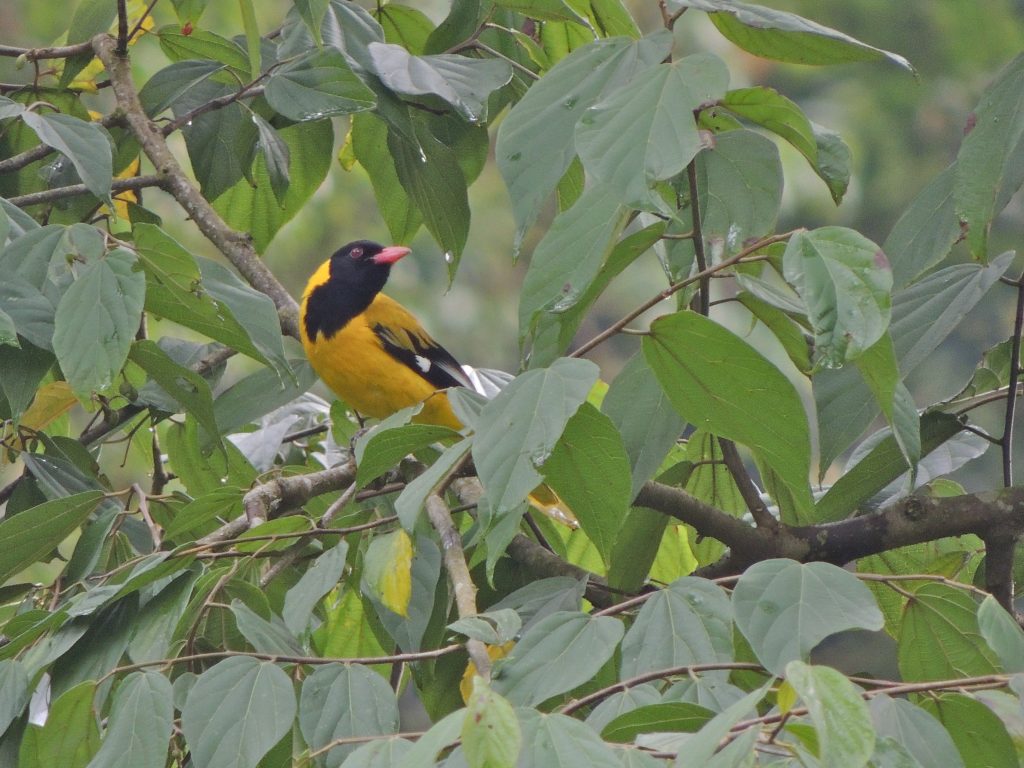
Birding inside Bwindi means being part of a team; you don’t go alone. Usually you have a well-informed local birder as a guide, often a UWA employee, and sometimes several others tag along for the experience. It’s standard that a gun-carrying guard accompanies you in case you run into an ill-tempered Forest Elephant. We saw an elephant just once, it was quite a distance off and moving away from us but the unarmed locals were very nervous; Perhaps naively I was less anxious, I thought having a guard with an AK47 was our insurance. The elephant kept going and the crisis was soon over.
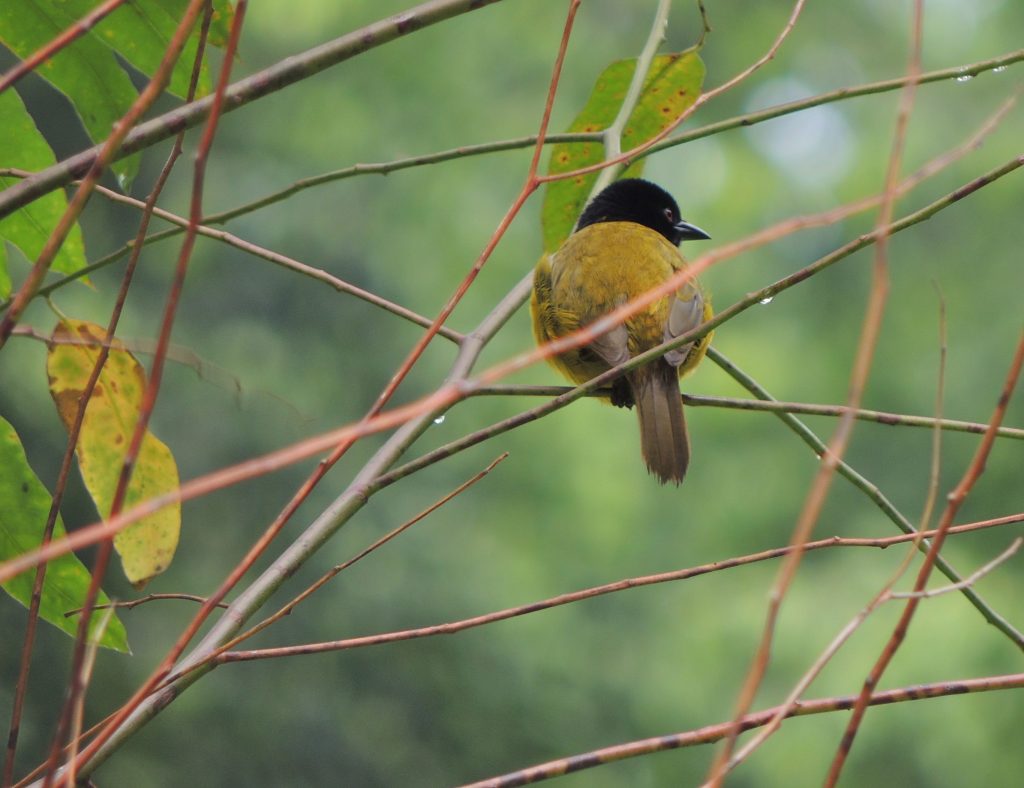
We quite often walked a quiet pipeline trail that led to a village’s water source within Bwindi (with a guide and a guard as noted above). My notes for that route include sightings of White-chinned Prinia, Mountain Masked Apalis, Collared Sunbird, Black-faced Rufous Warbler, Levaillant’s Cuckoo, Montane Oriole, Rwenzori Batis, Grey Cuckoo-shrike and Blue-headed Sunbird.
Finding and listing birds actually seen within Bwindi takes work and is straightforward enough.But what of all the other birds seen nearby and which could just as easily be found in Bwindi? Well take a look at this page. It looks more closely at what you’ll encounter outside the National Park, although it’s a sure bet that every now and then some of those outsiders stray across the forest boundary.
And for more on Bwindi itself follow this useful link.